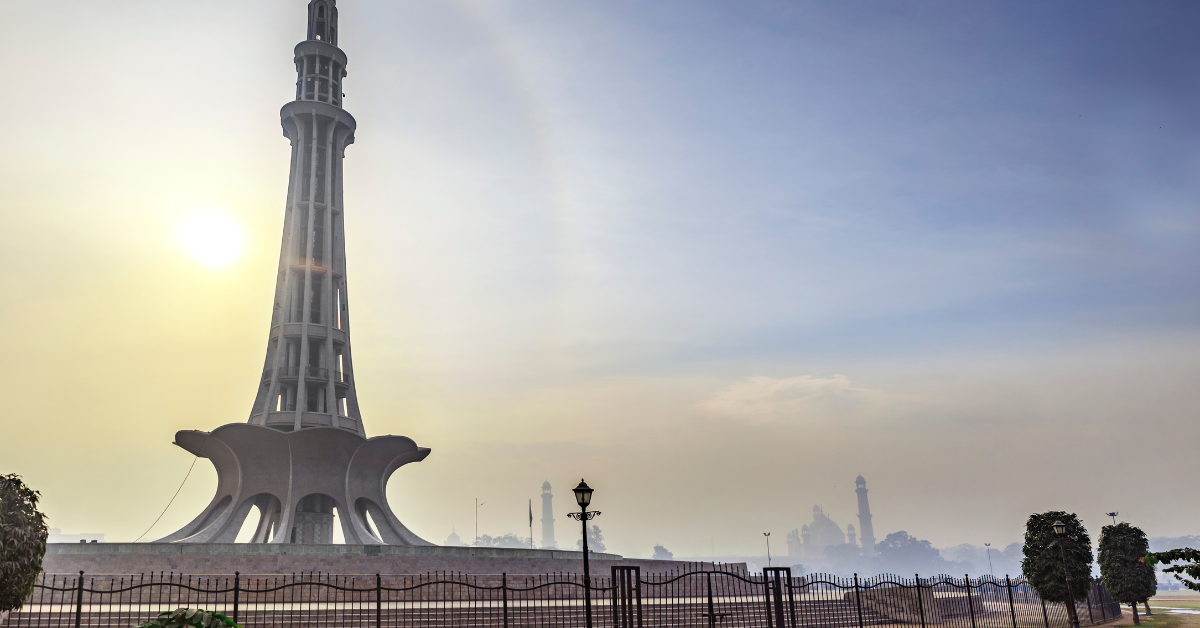Lahore, the second-largest city in Pakistan, is known in Chinese as “拉合爾.” While the transcription may seem unusual to Japanese readers, it reflects the city’s sound rather than meaning. For Japanese people, Lahore is still a distant and lesser-known city, yet it evokes curiosity due to its history, culture, and people
The Chinese Character Transcription “拉合爾” for Lahore
Lahore is a city that symbolizes the history and culture of Pakistan, home to numerous examples of Indo-Islamic architecture. The Chinese transcription “拉合爾” is a phonetic rendering, similar to ateji in Japanese. The characters were not chosen for meaning but rather for how closely they approximate the city’s pronunciation.
Here is a table of Chinese transcriptions of major Pakistani cities:
| City | Chinese Transcription | Pronunciation | Features |
|---|---|---|---|
| Lahore | 拉合爾 | Lāhé’ěr | Cultural and historical center |
| Islamabad | 伊斯蘭瑪巴德 | Yīsīlánmǎbādé | Capital of Pakistan |
| Karachi | 卡拉奇 | Kǎlāqí | Economic hub |
How Japanese People Perceive Lahore
For most Japanese people, Lahore is not yet a familiar destination. Impressions are therefore shaped largely by limited sources such as news, documentaries, or occasional travel reports.
- A city of history and culture
With UNESCO World Heritage sites like Lahore Fort and Badshahi Mosque, the city is strongly associated with learning history. - A symbol of Islamic culture
Religion is deeply rooted in daily life. The sound of the azan and the sight of worshippers at mosques leave the impression of “a city where one can experience Islamic culture.” - A distant, foreign place
Concerns about safety, distance, and limited direct access mean that many see Lahore as “a difficult place to visit.” - Warm-hearted people
Travelers often emphasize the kindness and hospitality of local residents, giving the city a friendly image despite its remoteness.
| Impression | Description |
|---|---|
| Historical city | A place where ancient culture is still alive |
| Religious city | Mosques and the sound of the azan |
| Unknown land | Far from Japan with little information available |
| Warm people | A welcoming atmosphere for visitors |
Culture and Daily Life in Lahore
Lahore is also called the “Cultural Capital” of Pakistan, combining art, education, and food culture. It offers diverse experiences that appeal to both locals and foreigners.
Food Culture
The cuisine is characterized by generous use of spices. Dishes like biryani and kebabs are world-famous. For Japanese people, many flavors feel familiar because they resemble the roots of curry.
Education and Scholarship
The city is home to prestigious institutions such as Punjab University, making it a hub of academic life. Student districts filled with bookshops and cafés create a scholarly atmosphere.
| Field | Features |
|---|---|
| Food | Rich dishes with spices |
| Arts | A strong tradition of music and poetry |
| Academia | Education thriving around Punjab University |
Lahore as a Sports City
Lahore is also a major hub for sports in Pakistan. Above all, cricket dominates. The Gaddafi Stadium is world-renowned and serves as the venue for international matches.
On match days, the city transforms into a sea of excitement. The packed stands and roaring cheers are comparable to Japan’s enthusiasm for professional baseball or soccer.
In addition to cricket, field hockey, wrestling, and soccer are popular, providing opportunities for young people to gather and compete.
| Sport | Characteristics | Main Venue |
|---|---|---|
| Cricket | National sport with passionate fans | Gaddafi Stadium |
| Soccer | Active regional leagues | Local clubs |
| Field Hockey | A traditional powerhouse | Specialized arenas |
| Wrestling | Evolved from traditional martial arts | Community gyms |
Appeal and Challenges of Lahore for Japanese People
Lahore is a city rich in tourism resources and cultural appeal, but the main challenge is a lack of accessible information. In Japanese travel media, the city is rarely introduced in detail, making it difficult for potential visitors to form a concrete plan.
However, with the spread of social media and video platforms, Lahore is becoming more visible. People are starting to see it not only as a “distant unknown place” but also as “a vibrant cultural city where daily life thrives.”
| Aspect | Appeal | Challenge |
|---|---|---|
| Tourism | World Heritage and historical architecture | Limited information for planning |
| Culture | Diversity in music, food, and scholarship | Few introductions in Japanese media |
| Sports | Passion for cricket and hockey | Low recognition in Japan |
Conclusion
The Chinese transcription “拉合爾” for Lahore is a phonetic rendering, not commonly used in Japanese, but it provides an interesting example of how place names are adapted.
For Japanese people, Lahore is a historical and cultural city, a place where sports bring people together, and a community where daily life is vibrant. Precisely because much about it remains unknown, Lahore invites curiosity and offers the potential for new discovery. As international exchange grows, Japanese perceptions of Lahore are likely to become richer and more multi-dimensional.






